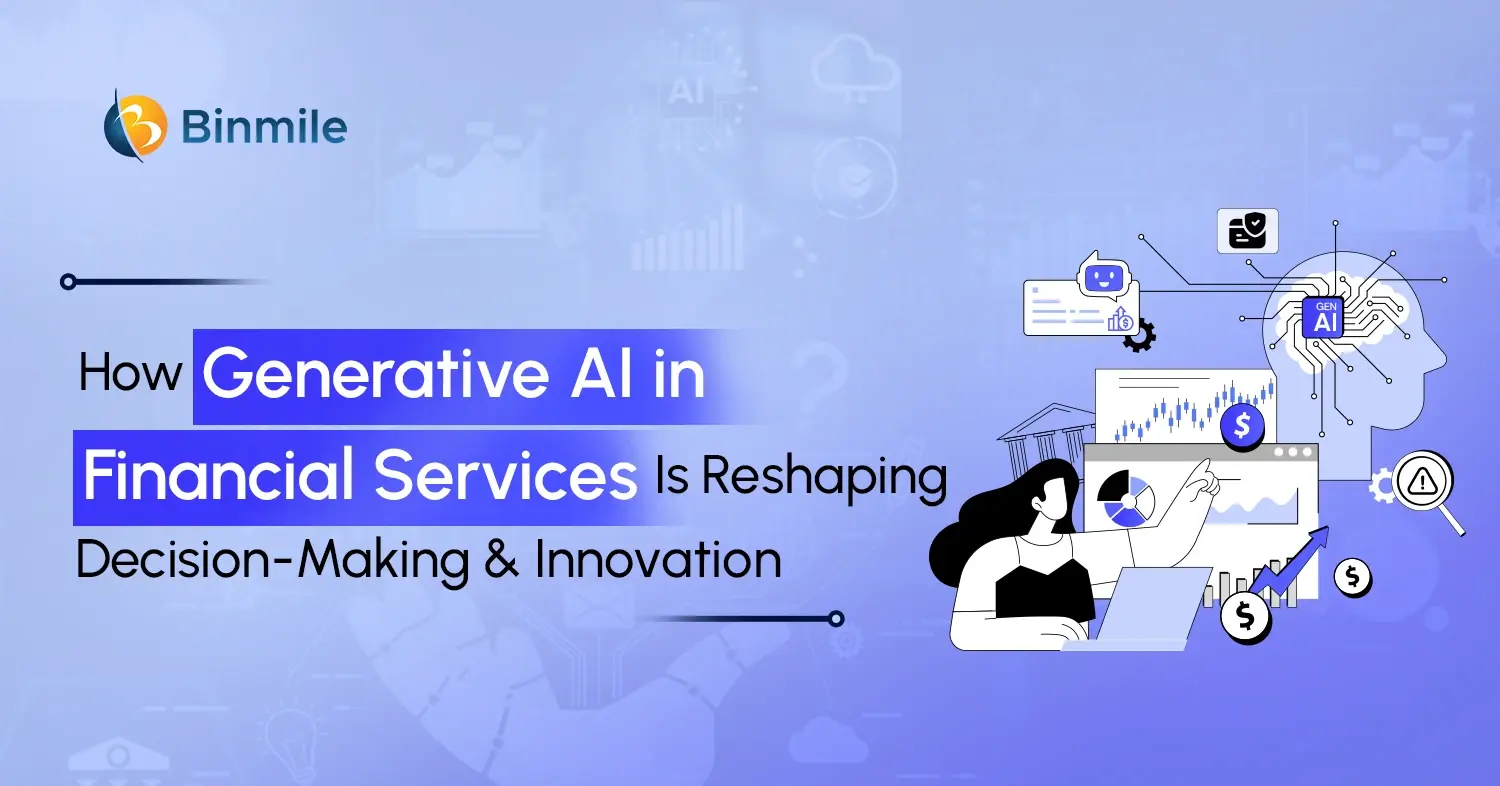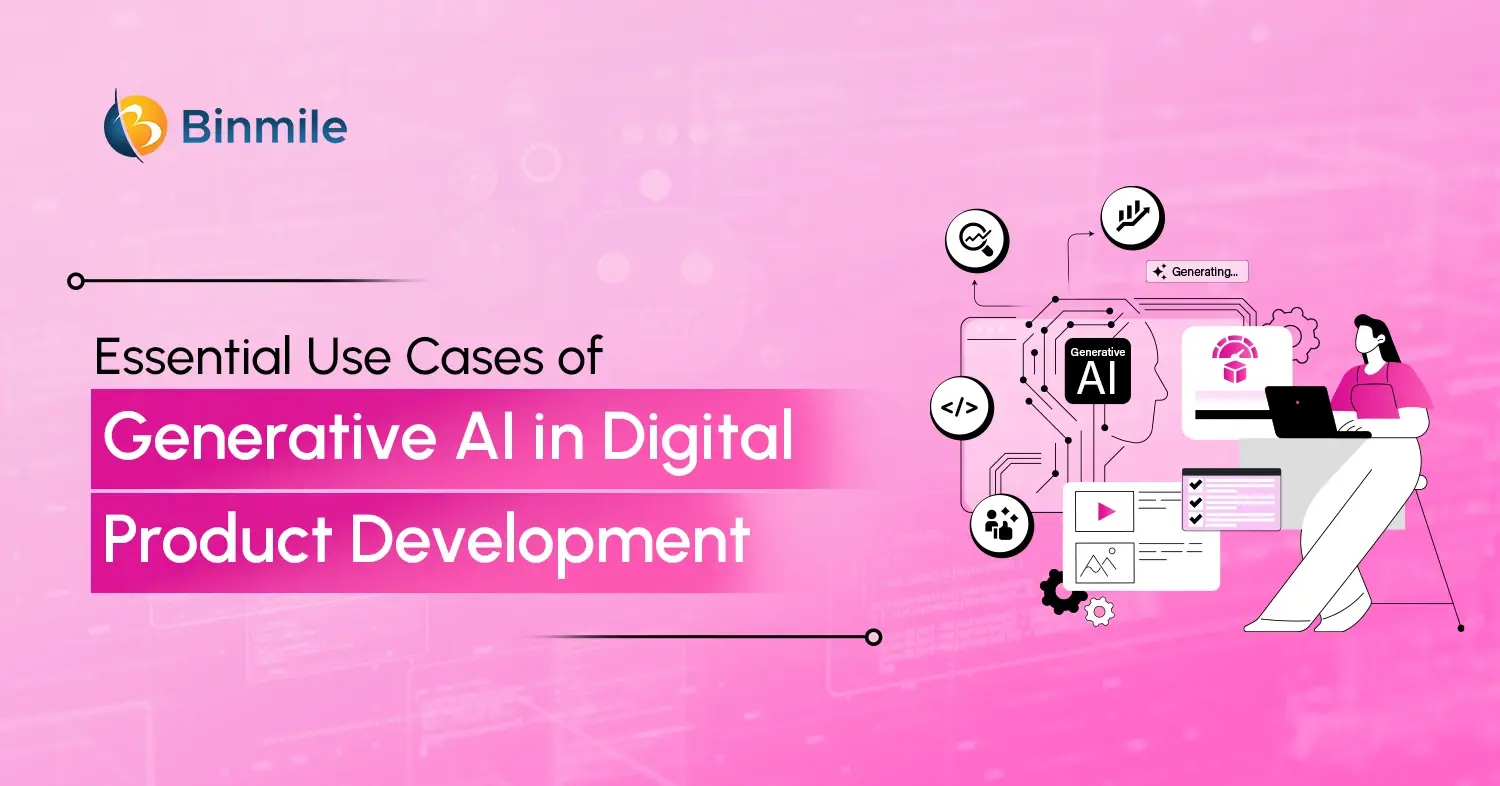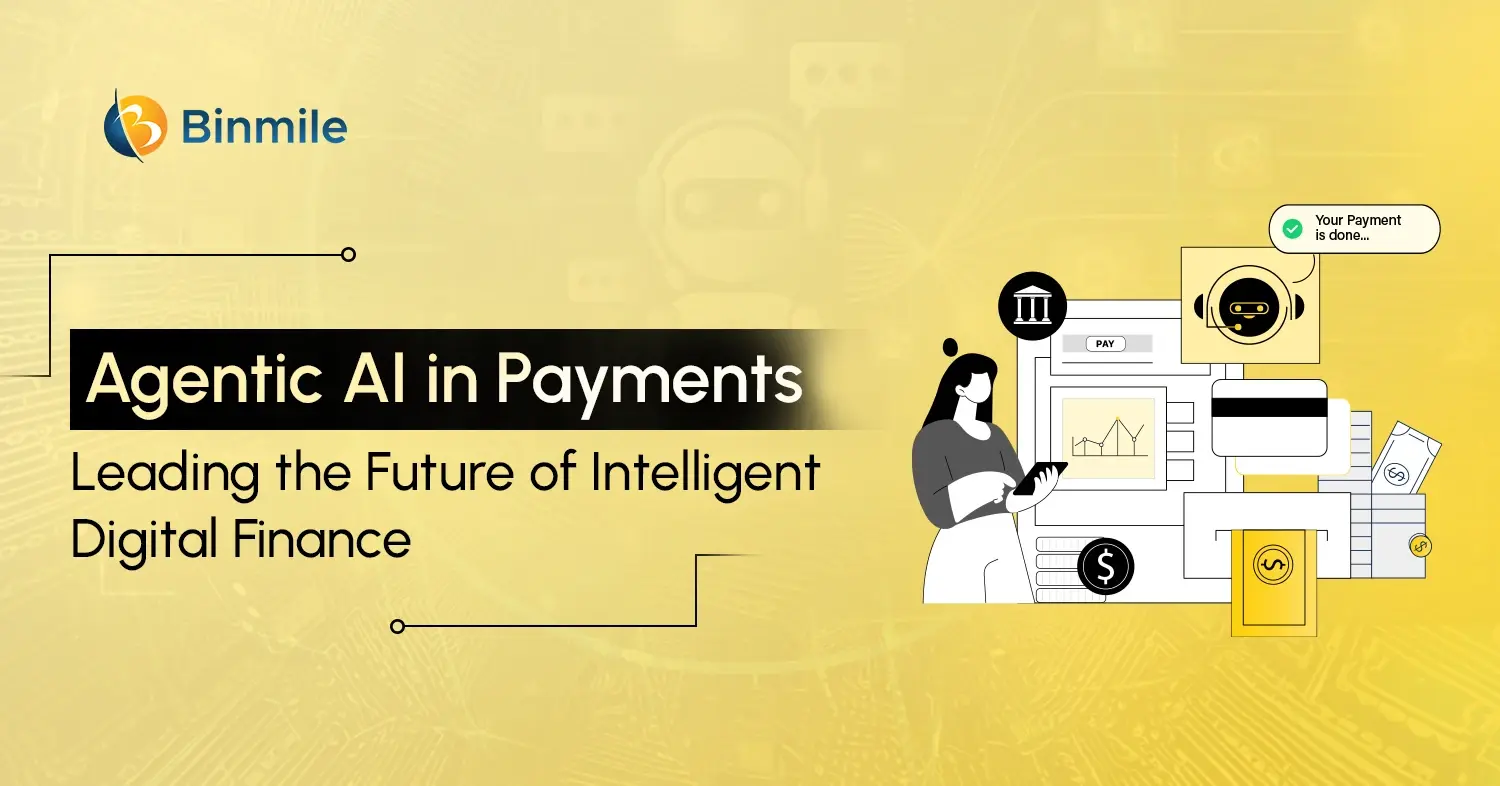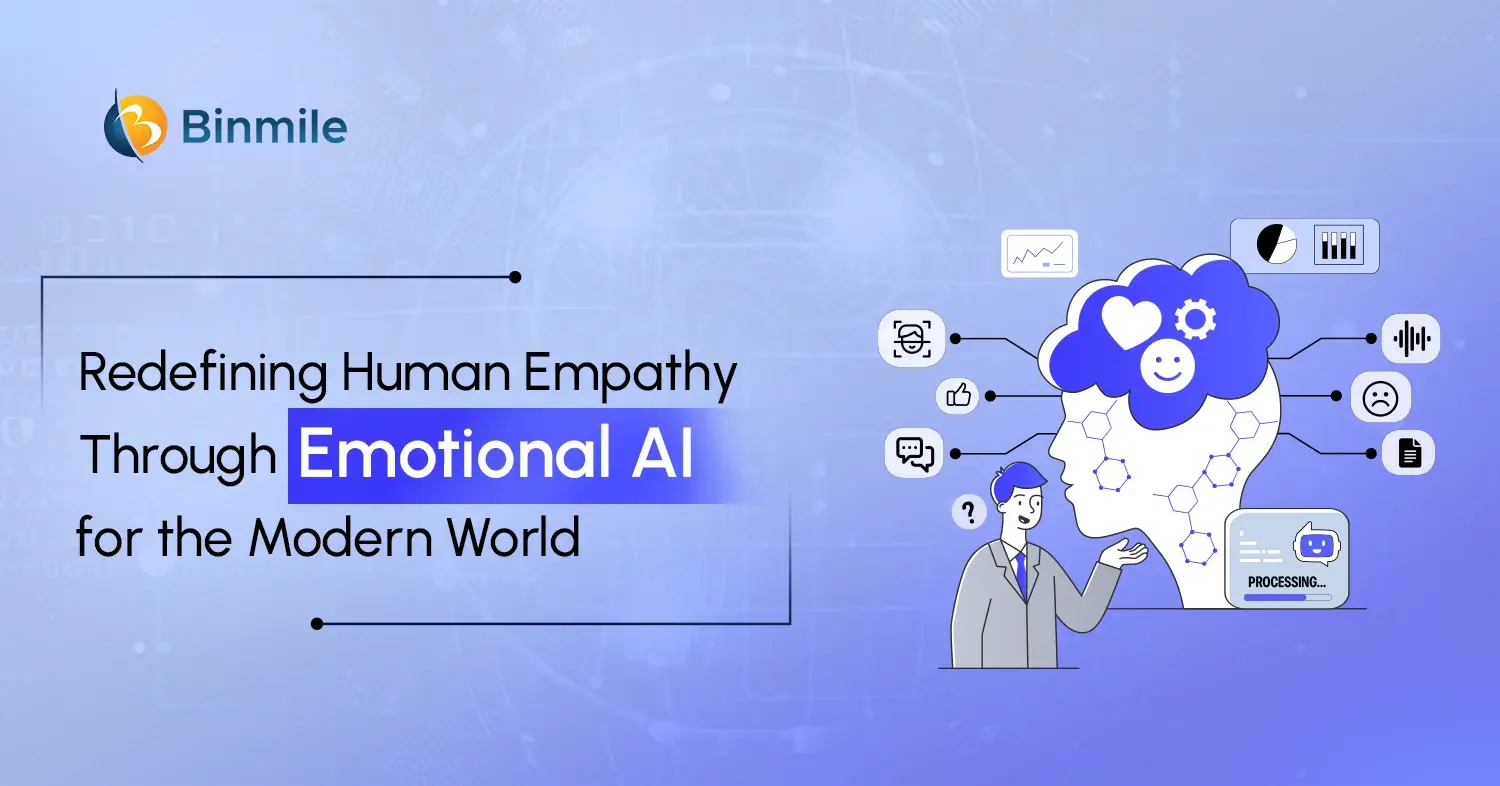Generative AI in financial services is no longer just an experiment; it has become the standard for driving smarter decisions, enhancing customer experiences, and gaining a competitive edge. The introduction of Generative AI technologies has affected the operations of the financial services sector. The operations of banks, Insurance companies, and fintechs have changed, evolving numerous prospects for improved efficiency, tailoring of services, and effective risk management. Grand View Research has projected the Generative AI in financial services market to reach USD 16.02 billion by 2030, growing at a rate of 39.1%. The growing use of Generative AI in the financial sector has been noted by big companies, where 71% of the Financial Institutions surveyed reported the use of AI in their operations.
Data automation and Generative AI in the financial sector go hand in hand. The new technology helps data-driven decision-making across the board. In customer engagement, the technology aids with fraud detection and offering tailored financial advice to clients. This blog aims to bring to light the numerous use cases, the challenges surrounding Generative AI, as well as the prospects of the technology in the financial sector.
What is Generative AI in Financial Services and How is it Used?
Within the financial services sector, Generative AI generates new outputs, such as reports, models, and predictions, by evaluating existing data. Generative AI in financial services differs from conventional AI as the former doesn’t merely follow a set of instructions. Generative AI offers insights, devises solutions, and even creates content that was never requested. Here are a few ways how AI is used in finance.
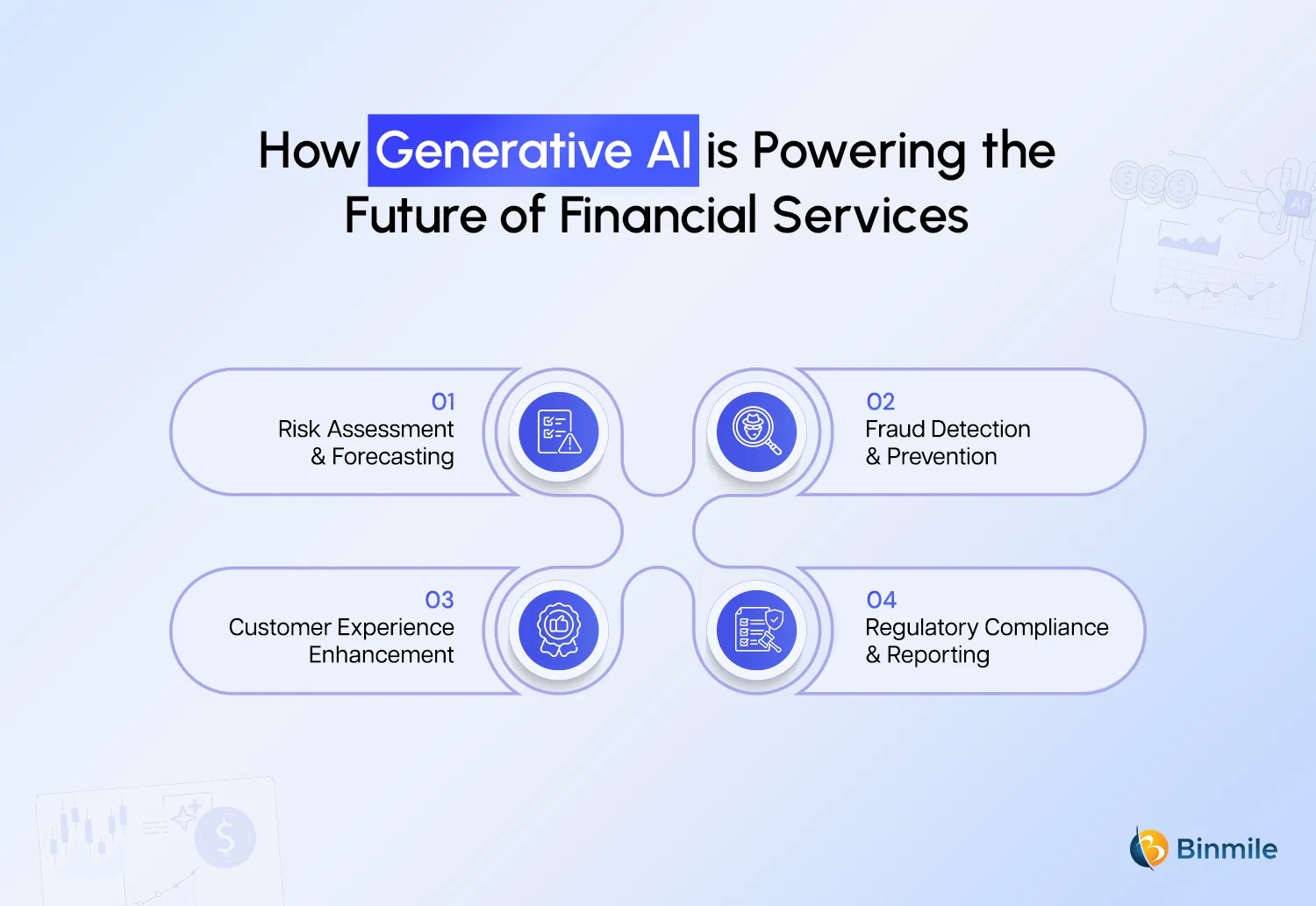
1. Risk Assessment and Management
Most importantly, a Generative AI in financial services created for the management of certain financial risks takes in vast amounts of both structured and unstructured data, and in real-time, as potential risks arise, the Gen AI models manage the risks. GenAI in finance, created for predicting market volatility and credit default risks, helps banks and other financial technology companies exposed to risks mitigate their financial exposure. Such exposure mitigations help financial institutions cope economically in case unexpected shifts occur.
2. Fraud Detection and Prevention
Once a set of transactional data is provided to the system, AI models are capable of detecting the data anomalies and, therefore, of learning. To limit the fraudulent execution of automated system financial transactions, Generative AI in financial services is capable of detecting odd transaction patterns and even potential system breaches. Predictive alerts that are generated by AI help financial institutions proactively secure their systems, as opposed to the generally expected reactive approach.
3. Customer Experience Enhancement:
Enhancing customer experience through Generative AI in financial services means more than just AI-powered chatbots. We can also have personalized investment recommendations and 24/7 real-time support. Generative AI can study customer behavior and preferences and personalize services, like loans, insurance, and investment advice. This not only fosters a sense of trust but also engagement.
4. Regulatory Compliance and Reporting:
Currently, the rapid pace of regulation changes poses unique compliance issues. Generative AI in financial services streamlines the processes of monitoring compliance, tracking changes in regulations, and preparing compliance reports, which all reduce the chances of human error. This allows financial institutions to concentrate their efforts and keep their operational costs low while ensuring compliance.
Generative AI in Financial Services Use Cases That Are Transforming the Industry
The impact of GenAI in finance use cases is broad, spanning banking, investment, fintech, and insurance. Some critical use cases include:
| Function | Traditional Approach | With Generative AI |
|---|---|---|
| Credit Scoring | Based on limited credit history and static parameters. | Use dynamic data such as spending patterns, transaction behavior, and alternative data for inclusive credit evaluation. |
| Algorithmic & Predictive Trading | Rely on rule-based systems that detect only known patterns. | Learn and predict new trends and scenarios in real time, preventing potential losses. |
| Customer Service | Manual query resolution with limited personalization. | AI chatbots offer instant, tailored responses and predictive financial advice. |
| Portfolio Management | Based on historical models and manual risk assessments. | AI adjusts portfolios based on evolving market conditions and user preferences. |
| Insurance Product Personalization | Periodic manual audits and documentation | GenAI in insurance complaint management enhances policy customization, predicts risk, and improves customer satisfaction. |
These examples highlight how GenAI in finance is reshaping traditional workflows by making them faster, more data-driven, and customer-centric.
Across the entire financial sector, in banking, insurance, investments, and fintech, the uses of Generative AI are revolutionary and transformative. The following are some of the most critical applications.
1: Credit scoring and lending decisions
Generative AI in financial services can incorporate qualitative analyses to incorporate social and behavioral factors into predictive payment and transaction histories, thereby improving credit scoring and promoting equitable lending. This means that banks can extend credit to some prospective clients that would otherwise be considered rejected due to having limited or even no credit history.
2: Algorithmic and predictive trading
Generative AI in financial services can analyze historical market data and formulate insights for predictive algorithmic trading. AI identifies patterns, which helps traders make quick decisions, improving profitability and reducing risk by eliminating human error in decision-making during periods of extreme volatility.
3: Customer service
Generative AI in the financial sector promotes the provision of a wider range of financial products while still enabling the prudent and risk-averse management of data-based decisions. It helps in providing customer satisfaction by offering instant, tailored responses and providing data-backed financial advice.
4: Portfolio management and wealth advisory:
GenAI in finance can analyze market behavior, risk appetite, and objectives to formulate insights for personalized portfolio optimization. The use of Generative AI in financial services enables wealth managers in financial services to deliver cutting-edge personalized strategies that dramatically broaden the scope of risk-adjusted return and portfolio optimization.
5: Insurance Product Personalization:
Generative AI, supported by an insurance software development company, enhances policy customization. AI customizes insurance offerings by analyzing customer data and predicting potential risk, improving customer satisfaction, and minimizing claim conflicts.
Stay informed with the latest trends in AI & finance and invest in AI-driven solutions by partnering with Binmile. Get a free quote.
Challenges and Risks of Generative AI in Financial Services
Generative AI in financial services provides substantial advantages, but challenges and risks will have to be managed.
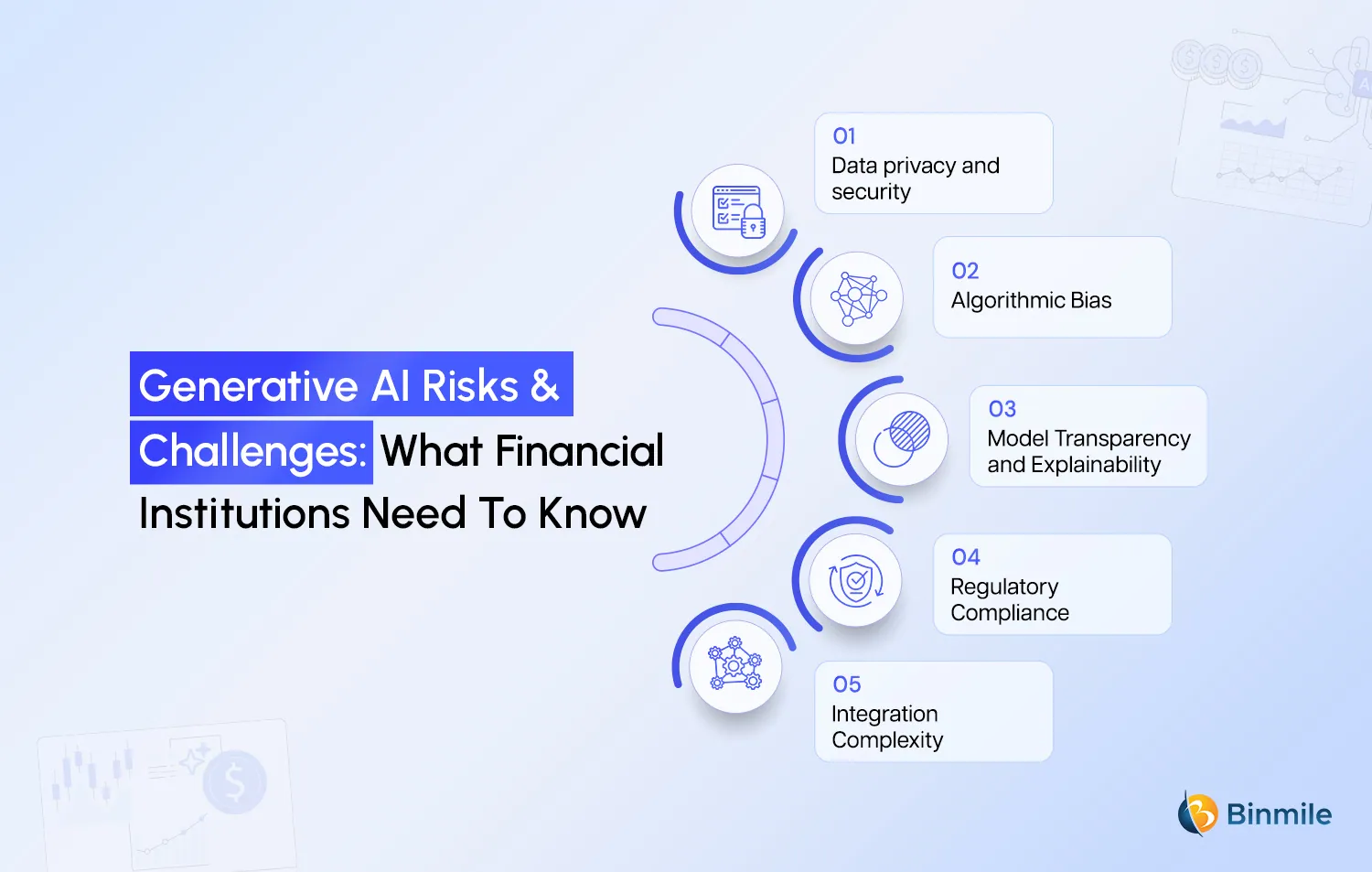
- Data Privacy and Security: GenAI in finance uses and generates large amounts of data. Customer data can be very personal, and so, protecting customer data from breaches and abuse, as well as implementing strong cybersecurity practices to mitigate GenAI security risks, is essential.
- Algorithmic Bias: Discrimination and unfairness can also arise from generative AI when bias is present within historical data. To offset, financial institutions should refine the auditing of AI models to guarantee sustained bias-neutral, open, and fair results.
- Model Transparency and Explainability: Generative AI in financial services outcomes can be convoluted and challenging to understand. Explanations of AI results should be provided to regulators and internal stakeholders for accountability.
- Regulatory Compliance: With the rapid development of AI technology, financial institutions need to ensure the compliance of their AI technology with the laws in the jurisdiction they are operating in. The Gena AI technology must also be compliant legally and from a security point of view.
- Integration Complexity: Integration of any technology will always come with challenges. The operational challenges come from ensuring efficiency and the seamless operational integration of AI with any legacy systems.
The risks of implementing Generative AI in the financial sector are insignificant relative to the value it provides in terms of precision, improved productivity, and better patron interaction. Such value propositions will continue to drive the adoption of Generative AI into business operations by Institutions that are inclined to technological advancement.
Top 5 Generative AI Trends in Financial Services For 2026
The changes being brought about by Generative AI in Financial services are taking place at a fast pace. Its anticipated future in the industry will focus on:
- Hyper Personalization of Customer Experience: There will be increasingly personalized products and suggestions. Customer participation and allegiance will improve, and more personalized Gen AI in banking, insurance, and investment services will become common practice.
- Integration with Emerging Technologies: Utilizing generative AI alongside blockchain, IoT, and cloud systems will aid in real-time decision-making, security, and transparency. For instance, AI can help automate fraud elimination while blockchain verifies transactions.
- Real-Time Risk Analysis and Decision Making: By having first access to Gen AI in finance, institutions can perform and implement real-time and automated risk assessments and enhanced decision-making regarding shifts in the market.
- Collaborations Between Banks and Fintechs: Innovations driven through collaboration with AI solution providers and fintechs can offer game-changing advancements in the sector. For a competitive edge, industries will require AI as a service to collaborate with an enterprise software development company.
- Advanced Fraud Detection and Security: AI will continuously advance to identify evolving fraud patterns. Generative AI adopters will be at a greater competitive advantage in protecting customer assets.
Empower your business with GenAI in finance to reach endless possibilities. Take your first step today for enormous potential in growth and innovation.
Conclusion
The use of advanced generative AI in financial services has moved beyond theory and textbooks; it’s happening right now. There are endless possibilities, including automating regulatory reporting and providing highly personalized financial advice. This blog highlights the need for generative AI in the finance sector, as it prioritizes ethical AI practices, designs resilient security protocols, and ensures smooth structural integration that helps organizations grow and maintain the position of a market leader. Financial organizations that recruit top AI talent or engage with fintech software development services will gain a competitive advantage in improving organizational effectiveness, customer safety, and satisfaction.
Procrastinating on adopting AI technologies will likely result in a significant loss of competitive advantage. Binmile, a leading software development company, empowers financial institutions with tailored software development for new growth opportunities. From designing secure data architectures to deploying scalable AI-driven solutions, Binmile helps businesses drive measurable transformations through intelligence and innovations.
